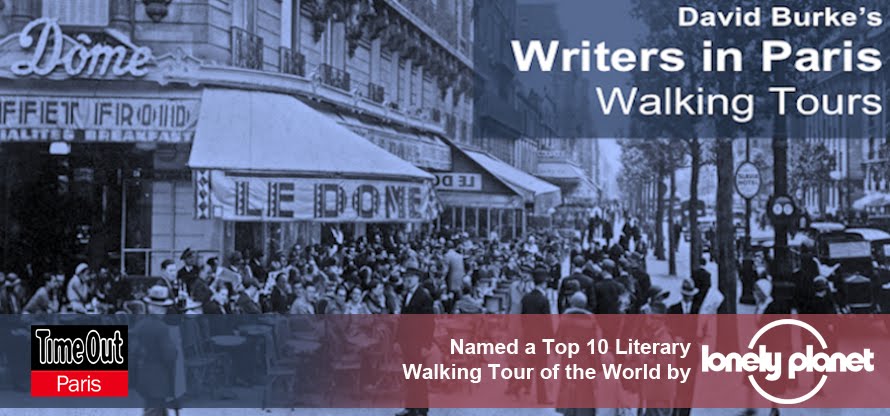Surrounded as it is by such intensely literary areas as the Latin Quarter, Saint Germain-des-Prés and Montparnasse, it’s no surprise that “the Luco” has long been a magnet to writers, foreign as well as French. But as we are English-speakers, most of us, anyway, we start with a batch of American writers who succumbed to its charm and wrote about it -- Henry James, Ernest Hemingway, Gertrude Stein, and William Faulkner – and will look at the French writers the next time.
In James’s 1903 novel The Ambassadors the trusty Lambert Strether has been sent from his home town of Wollett, Massachusetts, by the formidable Mrs. Newsome, his fiancé and boss, to find out what’s going on with her son Chad. The young man has spent five years in Paris and shows no sign of coming home. With Chad out of town when Strether arrives, he takes a few days to put himself “in relation” to the city,revisiting scenes from his own stay when he was a young man:
“In the Luxembourg Gardens he pulled up; here at last he found his nook, and here, on a penny chair from which terraces, alleys, vistas,fountains, little trees in garden tubs, little women in white caps and shrill little girls at play all sunnily ‘composed’ together, he passed an hour in which the cup of his emotions seemed truly to overflow.”
 Two decades after The Ambassadors came out another American coming here was the “very poor and very happy” young Hemingway in the years he would write about in A Moveable Feast. As he says in the memoir, he would walk in the park when he was “belly-empty, hollow hungry” to escape the tantalizing odours of food on the streets. “You saw and smelled nothingto eat all the way from the Place de l’Observatoire to the rue de Vaugirard.” Besides protecting himself from smells, he would go in the Luxembourg Museum, where Cézanne’s paintings were on display. Being hungry made him understood Cézanne’s work more truly,
Two decades after The Ambassadors came out another American coming here was the “very poor and very happy” young Hemingway in the years he would write about in A Moveable Feast. As he says in the memoir, he would walk in the park when he was “belly-empty, hollow hungry” to escape the tantalizing odours of food on the streets. “You saw and smelled nothingto eat all the way from the Place de l’Observatoire to the rue de Vaugirard.” Besides protecting himself from smells, he would go in the Luxembourg Museum, where Cézanne’s paintings were on display. Being hungry made him understood Cézanne’s work more truly,
he believed.
Young Hem would also cut through the park to visit Gertrude Stein at her atelier on the rue de Fleurus, just down the street from the western gate. Stein loved the Luxembourg Gardens. She and Alice took their daily walks in the tree-lined alleyways. Coincidentally, Stein landed in Paris the same year The Ambassadors came out. She was deeply influenced by James’s writing. In the 1920s she would tick off for her visitors the four greats of American literature: “Poe, Whitman, James, and myself.” And since James had passed away a few years earlier, she was the only one left standing.
In 1925 William Faulkner lived in a garret room overlooking the Luxembourg Gardens on the rue de Vaugirard. It was the only place he liked in Paris. He planned to stay for two years, but left after only five months and went back to his true creative milieu in Mississippi
and future home to his mythical Yoknapatawpha County. The only literary use of Faulkner’s stay in Paris is set in the final pages of his 1931 novel Sanctuary, where we find the young heroine Temple Drake, unhinged by her kidnapping at the hands of the pervert Popeye, having been brought to Europe by her father to help her forget. The scene takes place at a concert in the Luxembourg Gardens:

“Rich and resonant the brasses crashed and died in the thick green twilight, rolling over them in rich sad waves. Temple yawned behind her hand, then she took out a compact and opened it on a face in miniature sullen and discontented and sad. Beside her her father sat, his hands crossed on the head of his stick, the rigid bar of his moustache beaded with moisture like frosted silver. She closed the compact and from beneath her smart new hat she seemed to follow with her eyes the waves of music, to dissolve into the dying brasses, across the pool and the opposite semicircle of trees where at somber intervals the dead tranquil queens in stained marble mused, and on into the sky lying prone and vanquished in the season of rain and
death.”


















